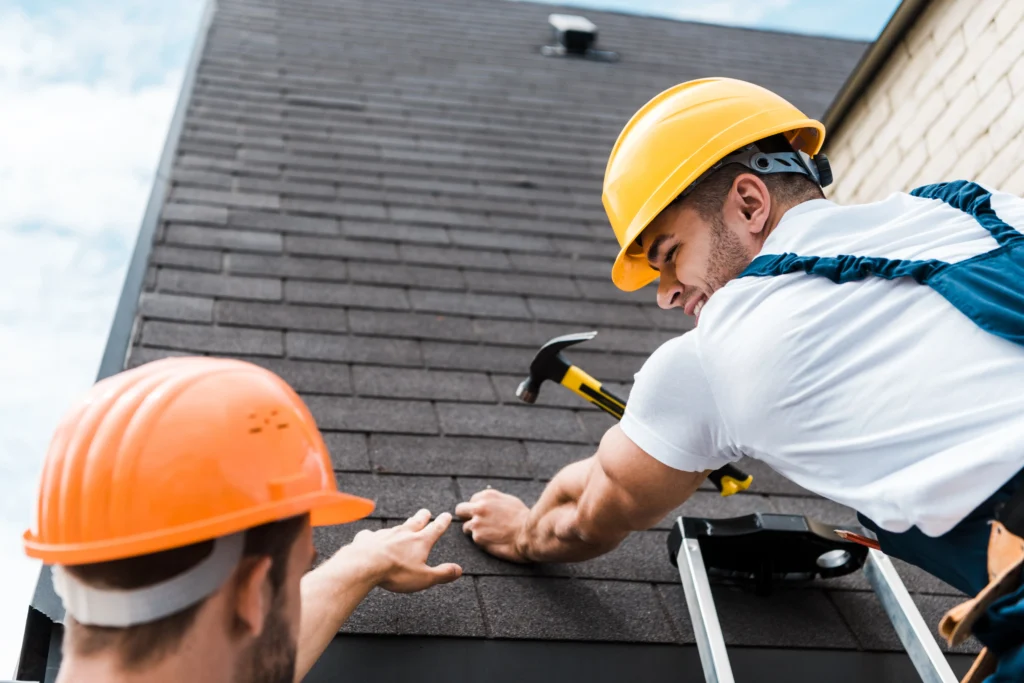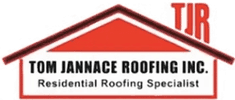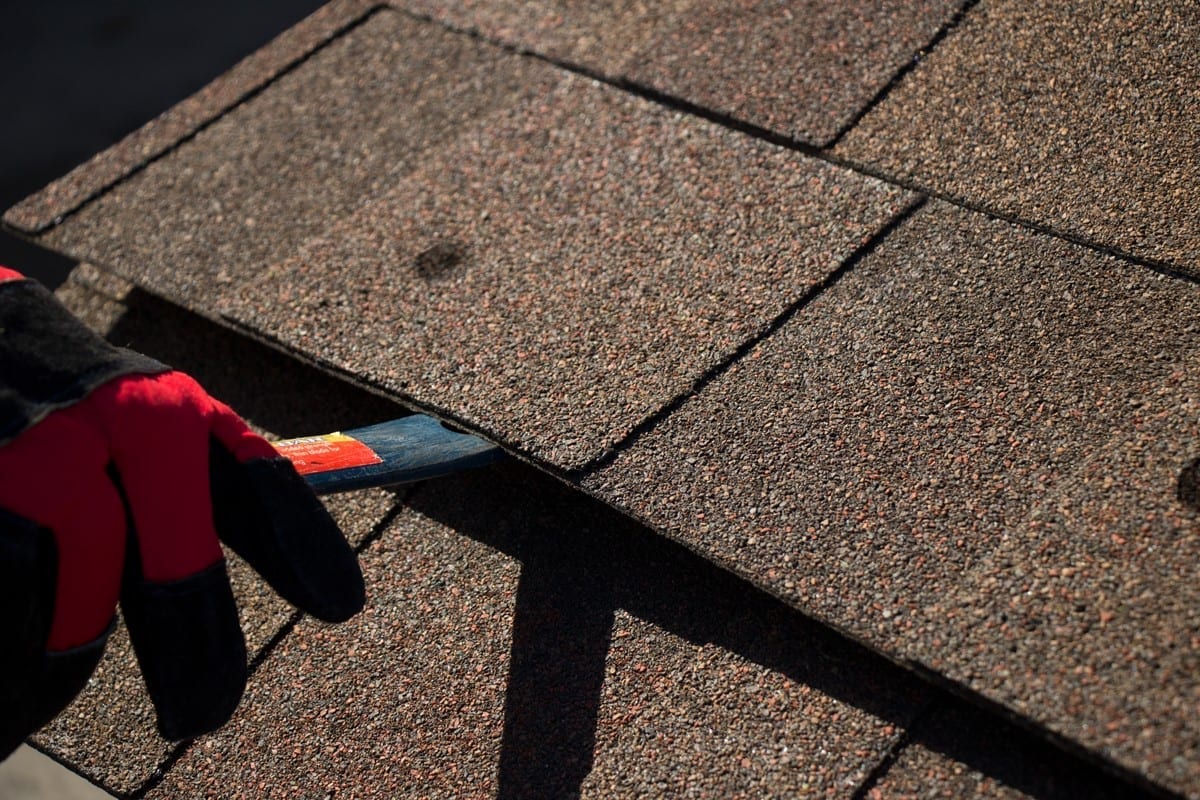Roof Replacement Financing: Smart Options for Homeowners
Roof shingle repair protects your home from water damage, prevents costly replacements, and extends your roof’s lifespan. According to HomeAdvisor’s 2024 data, homeowners spend between $350 and $1,050 on typical shingle repairs, with costs varying based on damage extent and roof accessibility. If you’ve noticed missing shingles, curling edges, or granule loss, addressing these issues quickly prevents minor problems from becoming major expenses.
This guide covers everything you need to know about roof shingle repair in 2025. You’ll learn exact cost breakdowns, step-by-step repair methods, and how to decide between DIY fixes and professional service. Whether you’re dealing with storm damage or routine wear, this resource helps you make informed decisions that protect your home and budget.
Table of Contents
- What Is Roof Shingle Repair
- Roof Shingle Repair Costs in 2025
- How to Repair Roof Shingles Step-by-Step
- When to Replace vs Repair Roof Shingles
- FAQ
- Conclusion
What Is Roof Shingle Repair
Roof shingle repair involves fixing or replacing damaged individual shingles without replacing the entire roof system. This targeted approach addresses specific problem areas like cracked shingles, wind damage, or missing tabs. Professional contractors and experienced DIYers can handle most repairs without disturbing the surrounding roofing materials.
Roof shingle repair fixes isolated damage to asphalt or architectural shingles through replacement, adhesive application, or securing loose materials. Repairs typically address 5-20 shingles and cost significantly less than full roof replacement while extending overall roof life.
Common Types of Shingle Damage
Asphalt shingles face multiple failure modes throughout their lifespan. According to the National Roofing Contractors Association (NRCA) 2024 technical bulletin, wind damage accounts for 40% of all shingle repair calls in coastal regions. High winds lift shingle edges, break adhesive seals, and sometimes tear entire shingles from the roof deck.
Granule loss represents another major concern. These ceramic-coated minerals protect asphalt from UV degradation. When granules wash away, shingles age rapidly and become brittle. Check your gutters after heavy rain. Excessive granules signal advanced wear requiring professional evaluation.
Thermal cycling creates cracks over time. Winter freezing and summer heat cause expansion and contraction. This stress eventually splits shingles along their length or width. Cracked shingles allow water infiltration that damages underlayment and roof decking beneath.
Why Immediate Repair Matters
Delaying shingle repairs creates cascading problems throughout your roofing system. Water entering through damaged shingles saturates the roofing underlayment, which then loses its waterproofing capability. The Institute of Business & Home Safety (IBHS) 2023 research shows that even small leaks can cause $5,000-$15,000 in interior damage within 12-18 months.
Damaged shingles also compromise neighboring materials. Wind catches lifted edges and progressively tears away additional shingles. What starts as a two-shingle problem quickly becomes a 20-shingle emergency. Tom Jannace Roofing has documented this progression in hundreds of Suffolk County homes since 1990.
Insurance companies often deny claims for preventable damage. If you knew about missing shingles but delayed repairs, insurers may classify subsequent water damage as neglect rather than covered loss. Document damage immediately and complete repairs within reasonable timeframes.
Roof Shingle Repair Costs in 2025
Understanding roof repair costs helps you budget appropriately and evaluate contractor quotes. According to Angi’s 2025 pricing data, the national average for professional shingle repair ranges from $450 to $950, with most homeowners spending around $650. Location, roof pitch, and damage extent significantly impact final costs.
Breaking Down Repair Cost Factors
Professional roof shingle repair cost components:
- Service call/inspection: $75-$150 (often waived if repair proceeds)
- Labor per shingle: $25-$45 depending on roof accessibility
- Materials per shingle: $3-$8 for standard three-tab, $8-$15 for architectural
- Roof shingle adhesive: $15-$30 per tube (covers 10-15 shingles)
- Flashing repair: $150-$400 if damaged areas include valleys or penetrations
- Underlayment replacement: $200-$500 if water damaged substrate
- Emergency service premium: Add 50-100% for weekend/after-hours calls
Roof pitch dramatically affects labor costs. Steep roofs (8/12 pitch or greater) require additional safety equipment and slower work pace. Expect 25-40% higher labor charges for pitches exceeding 6/12. Two-story homes add another 15-20% due to setup time and safety requirements.
Geographic location influences pricing substantially. Suffolk County roofing costs run 10-15% above national averages due to higher labor rates and material transportation. However, local contractors like Tom Jannace Roofing understand regional building codes and insurance requirements better than national chains.
DIY vs Professional Repair Costs
Homeowners attempting DIY repairs spend $150-$300 on materials and safety equipment. You’ll need replacement shingles, roofing cement, a pry bar, roofing nails, and safety harness. However, the National Association of Home Builders (NAHB) 2024 safety report notes that roofing causes 34% of all construction-related falls.
Professional repairs include liability insurance, workers’ compensation coverage, and warranty protection. Tom Jannace Roofing provides workmanship warranties covering repair areas for 5-10 years depending on scope. DIY repairs carry no such protection. If your repair fails or causes additional damage, you absorb all costs.
Expert Tip: Get three written estimates for repairs exceeding $500. Compare scope of work, not just price. The lowest bid often excludes critical steps like underlayment inspection or proper flashing integration. Quality contractors itemize every component.
Mini-Case: Storm Damage Repair Cost
After a severe windstorm in March 2024, a Stony Brook homeowner discovered 12 missing shingles on their south-facing roof. They contacted Tom Jannace Roofing for inspection. The evaluation revealed wind damage plus compromised underlayment beneath three shingles.
The repair included replacing 12 architectural shingles, patching 18 square feet of underlayment, re-securing surrounding shingles, and sealing all nail penetrations. Total cost came to $875, completed in four hours. The homeowner’s insurance covered $750 after their $500 deductible. Waiting would have allowed water infiltration causing estimated $3,200 in ceiling damage.
This example demonstrates how prompt professional repair saves money long-term despite higher upfront costs than DIY approaches.
How to Repair Roof Shingles Step-by-Step
Repairing roof shingles requires careful preparation, proper materials, and attention to safety. This tutorial covers basic repairs for accessible, low-pitch roofs. Complex situations involving steep pitches, multiple layers, or structural damage require professional evaluation. Never attempt roof work in wet, windy, or icy conditions.
Safety Preparation and Material Gathering
Step 1: Assess safety conditions and gather equipment
Check weather forecasts for dry conditions with temperatures between 50-80°F. Shingle adhesive doesn’t bond properly below 50°F. Gather a properly rated safety harness, sturdy extension ladder, flat pry bar, roofing nails, hammer, utility knife, and matching replacement shingles.
OSHA’s 2024 residential construction guidelines require fall protection for any roof work exceeding 6 feet in height. Use a roof anchor point and full-body harness rated for your weight plus 50 pounds. Position your ladder at a 75-degree angle, extending three feet above the roofline.
Inspect the work area from ground level using binoculars. Identify all damaged shingles, noting their position relative to roof features. Purchase replacement shingles matching your existing materials. Bring samples to roofing suppliers. Even slight color variations become obvious after installation.
Removing and Replacing Damaged Shingles
Step 2: Remove the damaged shingle carefully
Lift the shingle directly above the damaged one using your pry bar. Work gently to avoid breaking intact materials. Slide the pry bar under the damaged shingle and remove nails securing it to the roof deck. Most shingles use four to six nails.
Once nails are removed, pull the damaged shingle straight out from under the overlapping course. Inspect the roofing underlayment beneath. If torn or deteriorated, cut a patch from 15-pound felt or synthetic underlayment. Secure patches with roofing cement, not nails.
Step 3: Install the replacement shingle
Slide the new shingle into position, aligning it with surrounding materials. The bottom edge should match neighboring shingles exactly. Lift the overlapping course above and nail through the replacement shingle’s nail line. Use four nails minimum, positioning them 5/8 inch from edges.
Apply a quarter-sized dab of roof shingle adhesive under each corner of the replacement. Press firmly for 30 seconds. Apply additional adhesive to the overlapping shingle’s bottom edge where it contacts your repair. This creates a waterproof seal preventing wind lift.
Step 4: Seal and inspect the repair
Check the repair from multiple angles ensuring alignment and proper sealing. Apply additional roofing cement to any exposed nail heads. Gently press down all shingle edges, creating continuous contact with underlying materials. The repair should be virtually invisible when complete.
Wait 24-48 hours before heavy rain if possible. Adhesive bonds strengthen over time. Inspect the repair area after the next significant rainfall, looking for any water stains or loose edges. Most properly executed repairs last 10-15 years until surrounding materials require replacement.
When DIY Repair Isn’t Appropriate
Avoid DIY repairs if damage involves flashing, valleys, or roof penetrations like chimneys and vents. These critical areas require professional expertise to maintain waterproof integrity. Similarly, repairs exceeding 20 shingles suggest systemic problems needing comprehensive evaluation.
Second-story roofs, pitches exceeding 6/12, or homes with multiple roof levels exceed safe DIY parameters for most homeowners. The risk of serious injury outweighs potential cost savings. Licensed contractors carry specialized equipment and safety training for challenging installations.
When to Replace vs Repair Roof Shingles
Deciding between repair and replacement depends on damage extent, roof age, and long-term cost analysis. According to the NRCA’s 2024 roofing manual, repairs make sense when damage affects less than 30% of the roof surface and the system has 8+ years of remaining life expectancy. Beyond these thresholds, replacement becomes more economical.
Age and Condition Assessment
Standard asphalt shingles carry 20-30 year warranties, but actual lifespan varies with climate, ventilation, and maintenance. Suffolk County’s coastal environment typically reduces shingle life to 18-22 years due to salt air and temperature fluctuations. Tom Jannace Roofing recommends professional inspections every 3-5 years after the 10-year mark.
Examine your roof for widespread issues indicating replacement need. Curling shingle edges across multiple roof planes signal thermal fatigue. Extensive granule loss creating bald patches means UV protection has failed. Dark streaks or moss growth suggest moisture retention problems requiring systematic solutions.
Replacement vs repair decision matrix:
- Roof age under 10 years + isolated damage: Repair
- Roof age 10-15 years + damage under 20%: Repair with comprehensive inspection
- Roof age 15-20 years + damage over 15%: Strong replacement candidate
- Roof age over 20 years + any significant damage: Replace
- Multiple previous repair areas + new damage: Replace
- Insurance coverage available: Consult contractor and adjuster together
Cost Comparison Over Time
Calculate the annualized cost of repairs versus replacement. If your roof has 5 remaining years of life and repairs cost $1,200, you’re spending $240 per year. A $12,000 replacement lasting 20 years costs $600 annually but includes warranties and eliminates recurring repair expenses.
HomeAdvisor’s 2025 data shows the average Suffolk County roof replacement ranges from $8,500-$16,500 depending on size and materials. However, this investment adds $8,000-$12,000 to home value according to Remodeling Magazine’s 2024 Cost vs Value report. Repairs add no resale value.
Expert Tip: If planning to sell within 3-5 years, replacement makes more financial sense than repeated repairs. Home inspections flag aging roofs, giving buyers negotiating leverage. New roofs eliminate this concern and attract more offers.
Insurance Considerations
Most homeowner policies cover sudden damage from storms, falling trees, or fire but exclude gradual wear and deterioration. When filing claims, document damage immediately with photos from multiple angles. Schedule professional inspection within 48 hours showing damage extent.
Tom Jannace Roofing works directly with insurance adjusters, providing detailed damage assessments that support legitimate claims. We document pre-existing conditions separately from storm damage, preventing claim denials. Our 34 years of experience in Suffolk County means we understand local insurance company requirements.
Some policies include replacement cost coverage versus actual cash value. Replacement cost pays for new materials regardless of age. Actual cash value deducts depreciation, paying only the roof’s current worth. This distinction dramatically affects your out-of-pocket expenses for both repairs and replacements.
FAQ
How much does roof shingle repair cost on average?
Professional roof shingle repair costs $350-$1,050 nationally, with most homeowners paying around $650 according to HomeAdvisor’s 2024 data. Costs vary based on damage extent, roof accessibility, shingle type, and geographic location. Suffolk County repairs typically run 10-15% above national averages due to regional labor rates and coastal environmental challenges.
Can I repair roof shingles myself or should I hire a professional?
You can repair accessible, low-pitch roofs with isolated damage if you have proper safety equipment and construction experience. However, OSHA reports roofing causes 34% of construction falls. Professional repairs include liability coverage, workmanship warranties, and proper technique ensuring long-term performance. Repairs involving flashing, valleys, or steep pitches require licensed contractors.
How long do roof shingle repairs last?
Properly executed shingle repairs last 10-15 years when performed by licensed contractors using quality materials. The NRCA notes repair longevity depends on surrounding shingle condition, climate exposure, and installation technique. DIY repairs often fail within 2-5 years due to improper sealing or inadequate fastening. Professional warranties typically cover workmanship for 5-10 years.
When should I replace my entire roof instead of repairing shingles?
Replace rather than repair when your roof exceeds 15-20 years old, damage affects over 30% of surface area, or you notice widespread curling and granule loss. The NRCA recommends replacement for roofs requiring frequent repairs or showing multiple failure modes. Replacement becomes more economical than repeated repairs when annualized costs exceed $400-$600 yearly.
Conclusion
Roof shingle repair protects your home from water damage while extending your roofing system’s lifespan. Understanding repair costs, proper techniques, and replacement timing helps you make informed decisions that balance immediate needs with long-term value. Whether you choose DIY methods or professional service, addressing shingle damage promptly prevents costly secondary problems.
For expert roof shingle repair in Suffolk County, contact Tom Jannace Roofing at https://tomjannaceroofing.com/. Our GAF-certified team has delivered honest, quality roofing solutions since 1990. Schedule your free inspection today and protect your home with proven expertise backed by 34 years of local experience.

Roofing Companies That Finance: What to Compare
When evaluating roofing companies with payment plans near me, compare not only financing terms but also contractor qualifications, material quality, warranty coverage, and customer service reputation. The cheapest financing may come from a less experienced contractor using inferior materials, costing more long-term through premature failures and repairs.
Compare APR, loan terms, down payment requirements, contractor certifications, material warranties, and customer reviews. The best choice balances affordable financing with quality workmanship and reliable materials.
Key Comparison Factors
Interest Rates and Terms: APRs for contractor financing range from 0% promotional rates to 25% or higher. Promotional rates often require excellent credit and full repayment within 12 to 24 months. Standard rates for good credit fall between 6% and 12%. Compare the total interest paid over the full term, not just monthly payments.
Down Payment Requirements: Some contractors require 10% to 25% down payments even with financing. Others offer no money down, which increases loan amounts and total interest. Determine which structure fits your available cash and long-term budget.
Contractor Certifications: GAF Master Elite, CertainTeed SELECT ShingleMaster, and Owens Corning Platinum contractors meet rigorous training and quality standards. These certifications often correlate with better workmanship and stronger manufacturer warranties.
Material and Warranty Considerations
Financing a new roof makes sense only if the roof lasts long enough to justify the investment. Asphalt shingles typically last 20 to 30 years, while metal roofs last 40 to 70 years. Match your loan term to the roof’s expected lifespan to avoid paying for a roof that needs replacement before the loan is satisfied.
Expert Tip: Choose contractors offering extended warranties that transfer to future homeowners. GAF’s Golden Pledge warranty, for example, covers materials and labor for 25 years and transfers once. This warranty adds resale value and protects your investment even if you sell before the loan matures.
Review warranty exclusions carefully. Some warranties are void if you don’t maintain gutters, allow moss growth, or hire non-certified contractors for repairs. Understanding these terms prevents costly surprises.
Financing a New Roof: Options, Terms, Programs
Financing a new roof involves choosing between contractor payment plans, bank loans, credit union products, online lenders, HELOCs, and government programs. Each option serves different credit profiles, urgency levels, and financial situations.
New roof financing options include contractor plans (0% to 25% APR), personal loans (5% to 36% APR), HELOCs (variable rates around prime plus 1% to 3%), and FHA Title I loans (fixed rates near 7% to 9%).
Contractor Payment Plans
Contractors partner with lenders like GreenSky, Mosaic, and ServiceFinance to offer point-of-sale financing. These programs often feature same-day approval, no money down, and promotional 0% APR for 12 to 24 months. After the promotional period, deferred interest may apply retroactively if balances remain unpaid.
A 2024 analysis by LendingTree found that contractor financing approval rates average 75% for applicants with credit scores above 640. Approval drops to 35% for scores below 600, requiring alternative solutions like co-signers or secured loans.
Bank and Credit Union Loans
Traditional banks and credit unions offer personal loans and home improvement loans with competitive rates for members with good credit. These loans provide lump-sum funding deposited in your account, giving you control over contractor payments and project timing.
Credit unions often beat bank rates by 1% to 3% due to nonprofit structures and member-focused policies. Navy Federal Credit Union, Pentagon Federal Credit Union, and local community credit unions frequently offer home improvement loans at 5% to 10% APR for qualified borrowers.
Government-Backed Programs
FHA Title I loans support home improvements up to $25,000 without requiring home equity. These loans work well for homeowners with limited equity or those avoiding home-secured debt. Rates typically range from 7% to 9%, and terms extend up to 20 years.
ENERGY STAR financing programs encourage energy-efficient roof installations through utility company rebates and specialized loan products. Some utilities offer 0% interest loans for ENERGY STAR-rated roofing materials, reducing both upfront costs and long-term energy bills.
Roof Loan vs Contractor Financing
Understanding the difference between independent roof loans and contractor financing helps you choose the option offering better terms and flexibility. A roof loan is obtained independently from a bank, credit union, or online lender. Contractor financing is arranged through the contractor’s lending partner at the point of sale.
Roof loans offer independence in contractor selection and competitive rates through shopping multiple lenders. Contractor financing provides convenience, fast approval, and sometimes promotional rates, but limits your choice to the contractor’s lending partner.
Independent Roof Loans
Personal loans from lenders like SoFi, LightStream, and Marcus by Goldman Sachs fund roof replacements without tying you to specific contractors. You receive funds, hire any licensed contractor, and make fixed monthly payments. Rates for excellent credit start around 5% to 7%, while fair credit sees 12% to 20%.
Independent loans offer flexibility. You can negotiate contractor prices knowing you have funding secured. This often results in better pricing than contractor-arranged financing, which may include markup to cover contractor commission fees paid to lenders.
Contractor-Arranged Financing
Contractor financing simplifies the process by bundling loan approval with project quotes. You complete one application, receive approval within hours, and begin work immediately. This convenience appeals to homeowners facing emergency repairs or those uncomfortable navigating loan applications independently.
Drawbacks include limited lender choice and potential rate markups. Some contractors add 2% to 5% to project costs when customers use financing to offset lender fees. Always request cash pricing and financing pricing separately to identify any markup.
Expert Tip: If choosing contractor financing, negotiate project price before discussing financing. Lock in cash pricing, then add financing as a payment method. This prevents contractors from inflating prices after learning you need financing.
Roof Financing: Local Insights & Rates
Local roof financing options vary by region due to differences in contractor availability, credit union networks, and state-specific lending regulations. Understanding regional factors helps you identify the best financing sources in your area and negotiate competitive terms.
Research local credit unions, regional banks, and contractors offering financing in your area. Rates and terms vary by location due to state regulations, market competition, and local cost of living factors.
Regional Rate Differences
Roof financing rates in high-cost regions like New York, California, and Massachusetts average 1% to 2% higher than rates in lower-cost states like Texas, Florida, and Ohio. This reflects cost of living differences, default risk calculations, and state lending regulations.
Suffolk County, New York contractors like Tom Jannace Roofing typically partner with national lenders offering rates from 6.9% to 24.9% APR depending on credit scores. Local credit unions like NEFCU and Teachers Federal Credit Union often provide competitive alternatives with rates 1% to 3% lower for members.
Finding Local Contractors with Financing
Search “roof contractors near me” or “roofing companies with payment plans near me” to generate local results. Filter for contractors displaying financing badges or mentioning payment plans on their websites. Contact at least three contractors to compare both project quotes and financing terms.
Check contractor credentials through state licensing boards. New York contractors must hold valid home improvement contractor licenses. Verify insurance coverage and request certificates of insurance before signing contracts. Tom Jannace Roofing maintains full licensing, insurance, and GAF certification, demonstrating commitment to quality and legal compliance.
Leveraging Local Resources
Local hardware stores like Home Depot and Lowe’s offer roofing contractor referrals and financing through their branded credit cards. These cards provide 6 to 24 months 0% APR on purchases over certain thresholds, typically $299 to $1,000. Use these for smaller repairs or as part of a larger financing strategy.
Community development financial institutions (CDFIs) serve underserved populations with affordable home improvement loans. These nonprofits prioritize financial inclusion over profit, offering rates 3% to 5% below conventional lenders for qualifying low- to moderate-income households.
FAQ
What credit score do I need for roof replacement financing?
Most lenders require minimum credit scores of 580 to 640 for approval. Scores above 670 qualify for the best rates, typically 6% to 10% APR. Scores below 580 may need secured loans, co-signers, or higher rates exceeding 20%.
Can I finance a roof with no money down?
Yes, many contractors offer zero down payment financing through partners like GreenSky and ServiceFinance. Approval depends on credit score and income verification. No down payment increases the total loan amount and interest paid over time.
How long does roof financing approval take?
Most contractor financing approvals arrive within minutes to 48 hours. Bank and credit union loans take 3 to 7 days for approval and funding. Online lenders like SoFi and LightStream typically approve within 24 hours and fund within 2 to 5 business days.
Are there government programs for roof financing?
Yes, FHA Title I loans support home improvements up to $25,000 without requiring home equity. ENERGY STAR programs offer rebates and specialized financing for energy-efficient roofing materials. Check with local utilities and HUD-approved lenders for program availability.
Conclusion
Roof replacement financing makes essential home improvements affordable through flexible payment plans, competitive interest rates, and fast approval processes. By comparing contractor financing, independent loans, and government programs, you identify the option matching your credit profile, budget, and timeline. Always verify contractor credentials, compare total loan costs, and read terms carefully before committing.Get fast, flexible roof replacement financing through our trusted contractor network. Contact Tom Jannace Roofing today for a free inspection, no-obligation estimate, and personalized financing options tailored to your needs.







